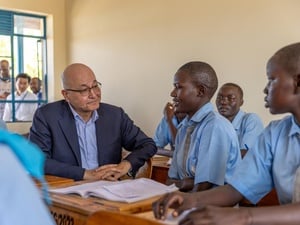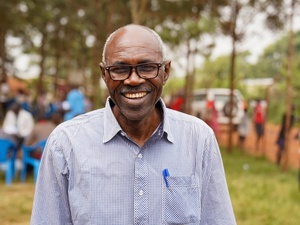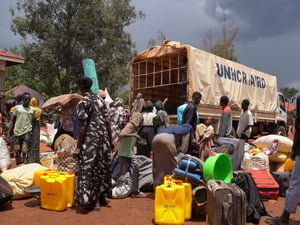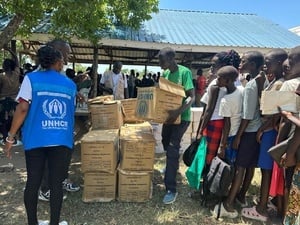South Sudan fighting drives surge of refugees to Uganda
South Sudan fighting drives surge of refugees to Uganda

Regina Keji, 54, fled to northern Uganda this month when violence erupted in Eastern Equatoria, South Sudan.
GENEVA – Recent fighting in South Sudan has to date forced 37,491 people to flee to Uganda. To put this in context: more refugees have arrived in Uganda in the past three weeks than during the entire first six months of 2016, when 33,838 came there in search of safety.
On 25 July an estimated 2,442 refugees were received in Uganda from South Sudan. Some 1,213 crossed at the Elugu border point in Amuru, 247 in Moyo, 57 in Lamwo and 370 in Oraba. Another 555 were received at the Kiryandongo settlement. The majority of arrivals – more than 90 per cent – are women and children. People are coming from South Sudan’s Eastern Equatoria region, as well as Juba and other areas of the country.
UNHCR spokesperson Adrian Edwards told a press briefing in Geneva that the intensity of the violence that broke out in South Sudan between rival factions loyal to Salva Kiir and Riek Machar has subsided since early July. However, the security situation remains volatile.
“The new arrivals in Uganda are reporting ongoing fighting as well as looting by armed militias, burning down of homes and murders of civilians,” Edwards said. “Some of the women and children told us they were separated from their husbands or fathers by armed groups, who are reportedly forcibly recruiting men into their ranks and preventing them from crossing the border.”
“Some of the women and children told us they were separated from their husbands or fathers by armed groups.”
Pascalina Juwa, 60, was among the newly arrived refugees who spoke to UNHCR in northern Uganda. This was the third time she fled to Uganda in her lifetime. She doesn‘t trust the current calm and escaped her hometown, Opari Payam, as soon as she could.
“Now we are all fighting among ourselves. Why?” Pascalina said. “At Pageri, there was a young boy, under 18, he came from grinding. When he was riding his motorcycle when he was going back, he was shot down. You see, these are the soldiers that are doing this to the community.”
UNHCR remains extremely worried about the situation. Daily arrivals were averaging around 1,500 just 10 days ago, but have risen to over 4,000 in the past week. Further surges in arrivals are a real possibility.
The influx is straining the capacity of collection points, and transit and reception centres, which are too small for the growing number of arrivals. During the course of the weekend, humanitarian organizations worked to decongest the collection points and installed temporary shelters to increase capacities. UNHCR has deployed additional staff, trucks and buses to assist.
At its peak, more than 11,000 refugees were staying in Elegu, in northern Uganda, in a compound equipped to shelter only 1,000 people. Over the course of the weekend, the centre was significantly decongested, and just 300 people slept there on Monday night. Many of the refugees have been moved to the Nyumanzi transit centre, where they are receiving hot meals, water, shelter and other life-saving assistance; others have been taken to expanded reception centres in Pagirinya.
The management and expansion of reception facilities as well as the opening of a new settlement area remain key priorities. A new settlement area has been identified in Yumbe district, with the capacity to potentially host up to 100,000 people. Temporary communal shelters are also being built to accommodate the continuing arrivals.
The humanitarian response to the influx of South Sudanese refugees is sorely lacking due to severe underfunding.
The humanitarian response to the influx of South Sudanese refugees is sorely lacking due to severe underfunding, Edwards said. “The inter-agency appeal is only funded at 17 per cent, which is constraining UNHCR and its partners to provide emergency and life-saving activities only and causing limitations to the full breadth of humanitarian assistance that can be offered.”
South Sudan’s conflict, which erupted in December 2013, has produced one of the world’s worst displacement situations with immense suffering. Some 1.69 million people are displaced inside the country, while there are now 831,582 South Sudanese refugees abroad, mainly in Ethiopia, Sudan and Uganda.
* Michael O'Hagan contributed reporting from Adjumani, Uganda










